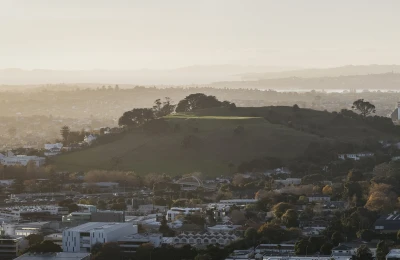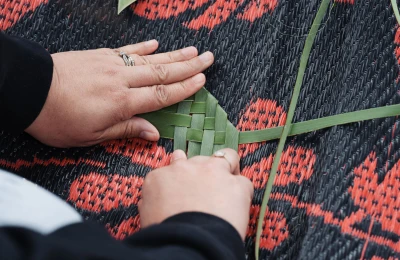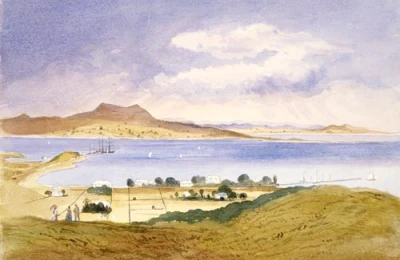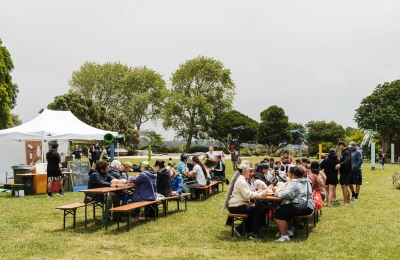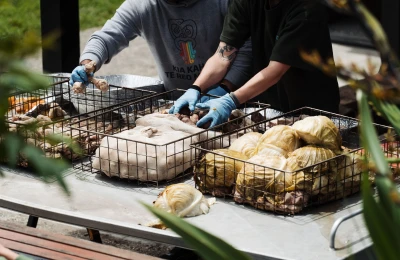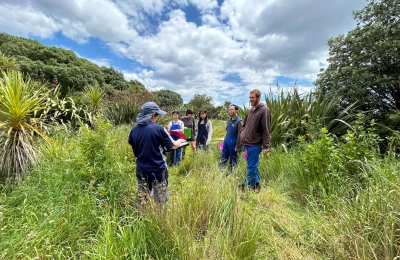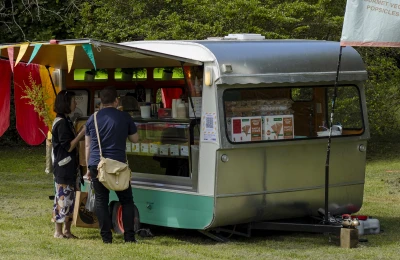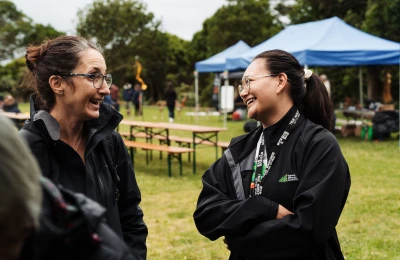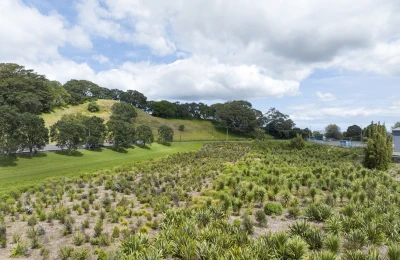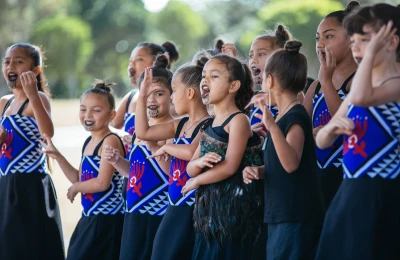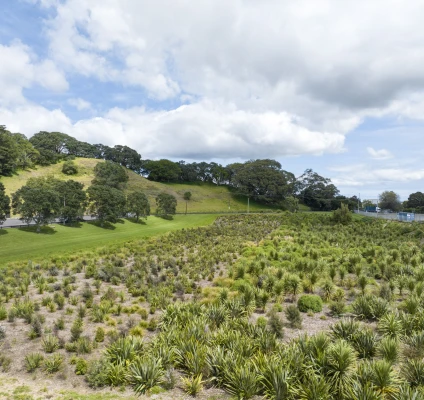Restoring native ecosystems. Protecting Taonga Species. Connecting Communities.
The Tūpuna Maunga (ancestral mountains) of Tāmaki Makaurau are treasured landmarks sacred to Mana Whenua, rich in history, and home to unique ecosystems. The Tūpuna Maunga Authority is committed to restoring and protecting these taonga through the biodiversity and biosecurity strategies. These are grounded in kaitiakitanga (guardianship) and mātauranga Māori, guided by the partnership between Ngā Mana Whenua o Tāmaki Makaurau and Auckland Council under the Tūpuna Maunga Integrated Management Plan (IMP).
Why Restoration Matters
The Tūpuna Maunga are part of a diverse and geologically young monogenetic basaltic volcanic field and the Maunga are conspicuous residual elements of this volcanic ecosystem. Distinctive vegetation and ecological communities developed, reflecting the geology, soils, and drainage patterns shaped over tens of thousands of years. The forests that grew would have supported a diverse range of insects, reptiles, birds and bats.
The Tūpuna Maunga were occupied and modified by the tribes of Tāmaki Makaurau as places of habitation, worship and used for the cultivation of food. Later, major modification occurred with urbanisation and quarrying, and this has reduced the ecosystem to small, disconnected fragments. These fragments suffer from edge effects, weed invasion and pest mammals. Pest mammals, especially possums and rats are significant threats that damage native flora by eating fruits and seeds as well as preying on vulnerable fauna, including pollinators and dispersers.
Restoration offers a powerful opportunity to reinstate and reconnect native ecology, helping to return the natural mauri (life force) of the Maunga. These efforts reconnect the Maunga with each other, with communities, and with the wider volcanic landscape.
Biodiversity Strategy
The Authority is restoring the native ecosystems of the Maunga that once flourished across the volcanic terrain. This is the WF7 Pūriri Ecosystem (more below). This work includes:
- Reintroducing native species including birds, mokomoko (lizards), and pekapeka (bats)
- Planting native trees and plants with cultural and ecological importance
- Supporting forest regeneration to create safe habitats for taonga species
- Monitoring and protecting rare and endangered species
- Partnering with Mana Whenua, schools, and community groups to share knowledge and grow connections
This restoration not only brings back biodiversity but also reconnects cultural relationships with traditional species used for medicine, weaving, and food.
Biosecurity Strategy
This strategy’s goal is to reduce the amount of pest flora and fauna on the Maunga and protect what remains through humane, innovative methods.
Invasive species threaten the delicate balance of Maunga ecosystems. The biosecurity work aims to:
- Eliminate pests like rats, possums, mustelids, rabbits, hedgehogs, plague skinks, unowned / feral cats, and invasive weeds
- Use humane and Environmental Protection Authority of New Zealand (EPA) approved animal and pest control, species-specific pest control
- Reduce use of herbicides and pesticides
- Encourage responsible pet ownership near the Maunga
- Monitor pests and taonga species through real-time digital tools
The aim is to create small predator-free sanctuaries on the Maunga to help protect the most vulnerable species.
Vegetation Restoration
Bringing back the WF7 Pūriri ecosystem.
The WF7 Pūriri ecosystem was once common across the volcanic landscape and is now critically endangered due quarrying and urbanisation. You can find out more about the ecosystem here. Since 2018, the Authority have been replanting thousands of native trees and plants, including:
- Pūriri, Tōtara, Kahikatea, Kohekohe, Māhoe, Hangehange
- Kānuka, Mānuka, Harakeke, Rengarenga, Toetoe, Kāramuramu
Removing pest plants and replacing them with native species helps restore habitat and food sources for mokomoko, birds, and other native wildlife. It provides a haven for these taonga species.
Love Your Maunga, Care for Your Pets
Our pets are part of our whānau but on the Maunga, they can pose a risk to native wildlife and ecosystems. Here's how you can help:
· Picking up after your dog (waste is harmful to soil and waterways)
- Keeping your dog on a lead, especially near native species and tamariki
- Following all Maunga dog rules. Please check carefully, as rules vary between Maunga
